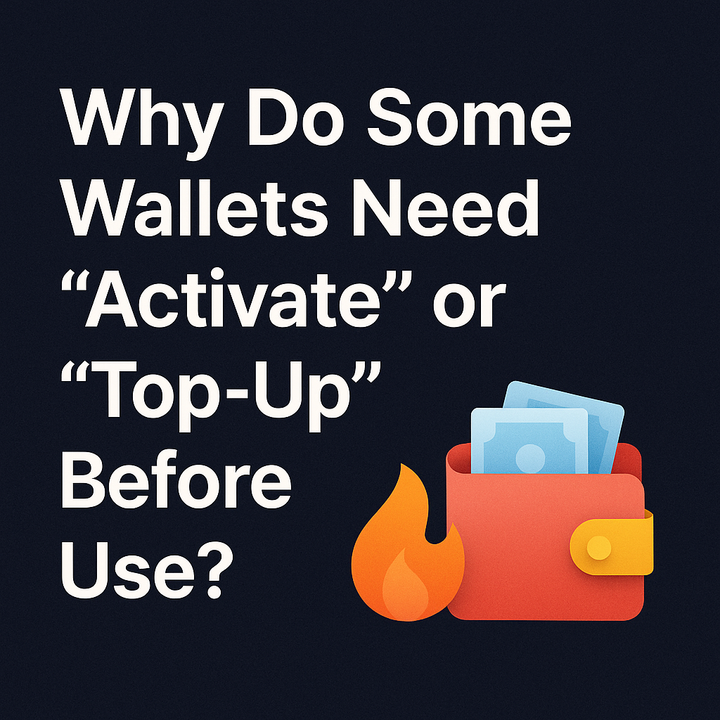One Wallet, Every Chain: Inside Mitosis’ Mission to Make Web3 Truly Borderless

Introduction
The Wallet Revolution No One Saw Coming
Imagine a world where your Web3 wallet doesn’t care which blockchain you’re using. No fiddling with network settings. No waiting for sluggish bridges. No missed opportunities because your assets are stuck on the wrong chain. Just you, your wallet, and the entire multichain universe at your fingertips.
This sounds like a distant dream in today’s fragmented Web3 landscape, but Mitosis is making it a reality. While Web3 has delivered groundbreaking advancements in decentralization, true accessibility remains elusive. Each blockchain operates like an isolated island, forcing users and developers to navigate a labyrinth of tools, tokens, and trust assumptions. The vision of an open, user-owned internet is still tangled in technical red tape.
Mitosis is pioneering a frictionless future where one wallet unlocks every chain. This article dives into the problem of Web3 fragmentation, how Mitosis is solving it, why their approach is a game-changer, and what it means for the future of decentralized technology.
In this article, we would explore:
1. The Problem of Web3 Fragmentation: Why the current multichain ecosystem creates barriers for users and developers, undermining the promise of a decentralized internet.
2. Mitosis’ Solution: How Mitosis’ universal coordination layer simplifies cross-chain interactions, delivering a seamless wallet experience for users and a unified toolkit for developers.
3. The Broader Impact: The transformative potential of a borderless Web3, from onboarding new users to enabling fluid capital and global composability.
4. Challenges and the Road Ahead: The technical and adoption hurdles Mitosis must overcome, and how they plan to scale their vision for a borderless Web3.
The Problem of Web3 Fragmentation
Web3 was meant to be the internet’s great equalizer—a decentralized ecosystem owned by its users. Yet, for all its promise, it often feels like a collection of walled gardens. Each blockchain has its own rules, tokens, and infrastructure, creating a fragmented experience that alienates users and stifles innovation.
For users, the pain points are all too familiar:
1. Cross-Chain Hassles: Want to swap tokens between Ethereum and Solana? You’ll need to bridge assets, pay gas fees, and wait—sometimes for hours.
2. Network Switching: Wallets like MetaMask require manual RPC switches to move between chains, a process that confuses newcomers and frustrates veterans.
3. Liquidity Traps: Your assets are only as useful as the chain they’re on. If a hot new DeFi protocol launches on Arbitrum but your tokens are on Polygon, you’re stuck.
Developers face even steeper challenges. Building a multichain dApp means wrestling with:
1. Duplicated Efforts: Supporting multiple chains requires separate smart contracts, integrations, and audits, driving up costs and complexity.
2. Siloed Liquidity: DeFi protocols struggle to aggregate liquidity across chains, limiting their scale and efficiency.
3. Security Risks: Each new chain integration introduces potential vulnerabilities, making multichain development a high-stakes gamble.
The result is a Web3 that’s less decentralized than it seems. Instead of a unified ecosystem, we have a patchwork of parallel worlds, each competing for users, developers, and capital. This fragmentation isn’t just inconvenient—it’s a barrier to mass adoption. If Web3 is to deliver on its promise, it needs to feel as seamless as Web2, without sacrificing decentralization.
Mitosis’ Solution: A Universal Coordination Layer
Mitosis isn’t adding another bridge, layer-2, or blockchain to the mix. Instead, they’re tackling fragmentation at its root by building a universal coordination layer for wallets. Think of it as a translator that lets your wallet speak fluently to every chain, without you lifting a finger.
Here’s how it works:
1. Abstracted Infrastructure: Mitosis handles the heavy lifting of cross-chain transactions in the background. When you initiate a swap, stake, or mint, Mitosis routes the transaction to the appropriate chain, optimizing for speed and cost. No manual network switches or bridge popups required.
2. One Wallet UX: Your wallet becomes a single, intuitive interface for all of Web3. Whether you’re minting an NFT on Polygon, swapping tokens on Base, or lending on Avalanche, the experience feels native and seamless.
3. Unified Developer Toolkit: Mitosis provides a single SDK that lets developers build for all supported chains. This slashes development time, reduces maintenance overhead, and lowers the barrier to creating multichain dApps.
This isn’t just a technical upgrade; it’s a reimagining of the Web3 user experience. By abstracting away the complexity of multichain interactions, Mitosis makes Web3 feel like a single, cohesive ecosystem. For users, it’s as simple as clicking a button. For developers, it’s a toolkit that unlocks the full potential of decentralization without the usual headaches.
For example, imagine you’re on Ethereum but spot a trading opportunity on a Base-native token. Without Mitosis, you’d need to bridge your assets, switch networks, and hope the market doesn’t move before your transaction clears. With Mitosis, you simply initiate the swap, and the system handles the rest—routing your transaction across chains in seconds.
The Broader Impact: A Borderless Web3
Mitosis’ vision goes beyond convenience:it’s about unlocking the next phase of Web3’s growth. When chains become invisible, the entire ecosystem benefits:
1. Faster User Onboarding: Newcomers don’t need to grapple with gas tokens, bridging, or network jargon. A single wallet that works everywhere lowers the learning curve, making Web3 accessible to billions.
2. Quicker Developer Iteration: With Mitosis’ SDK, developers can ship multichain dApps in weeks, not months. This accelerates innovation and empowers smaller teams to compete with industry giants.
3. Fluid Capital Flows: Liquidity no longer gets trapped on a single chain. Investors can move assets to the most promising opportunities, whether it’s a DeFi protocol on Optimism or a gaming ecosystem on Solana.
This seamless interoperability unlocks new possibilities:
1. Multichain Token Launches: Projects can deploy tokens across multiple chains from day one, maximizing reach and liquidity.
2. Chain-Agnostic NFTs: Creators can mint NFTs on the chain that best suits their needs—whether it’s Ethereum for prestige or Flow for low-cost transactions—without locking users into one ecosystem.
3. Global Composability: Developers can combine protocols from different chains, creating dApps that are greater than the sum of their parts. Imagine a DeFi app that aggregates yield from Ethereum, lending from Avalanche, and staking from Cosmos—all in one interface.
By removing the barriers between chains, Mitosis is setting a new standard for what Web3 can be. It’s not just about making wallets smarter; it’s about creating a world where decentralization feels effortless and intuitive.
Challenges and the Road Ahead
No solution is without hurdles, and Mitosis faces its share. Cross-chain coordination introduces technical complexities, from ensuring transaction reliability to managing gas costs across chains. Security is another concern—any layer that interacts with multiple blockchains must be airtight to prevent exploits. Mitosis will need to prove its infrastructure is robust enough to handle the scale and diversity of Web3’s multichain landscape.
There’s also the question of adoption. For Mitosis to succeed, it needs buy-in from wallets, dApps, and users. Convincing established players to integrate a new coordination layer could be an uphill battle, especially in a space where trust is hard-earned. However, Mitosis’ focus on developer-friendly tools and user-centric design gives it a strong foundation to build on.
Looking ahead, Mitosis plans to expand its supported chains and refine its routing algorithms to optimize for cost and speed. Partnerships with major wallets and protocols could further accelerate adoption, positioning Mitosis as a cornerstone of the multichain future.
Conclusion
Beyond Chains, Toward a Unified Web3
Web3 stands at a crossroads. The technology is mature, the user base is growing, and the potential is limitless. But the fragmented user experience remains a stubborn obstacle. Mitosis is addressing this head-on, laying the foundation for a borderless blockchain future where your wallet doesn’t care about chains—and neither do you.
Before you go, here are a few key takeaways:
- Web3’s fragmentation is a barrier to adoption, not a feature. Fewer tools and simpler interfaces are the path forward.
- Cross-chain interactions should feel like no-chain interactions—intuitive, fast, and invisible.
- A single wallet that works everywhere is the key to unlocking Web3’s global potential.
If every chain was just one click away, what would you build? Thanks to Mitosis, that future is closer than you think.



Comments ()